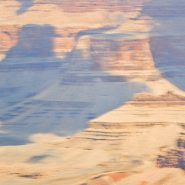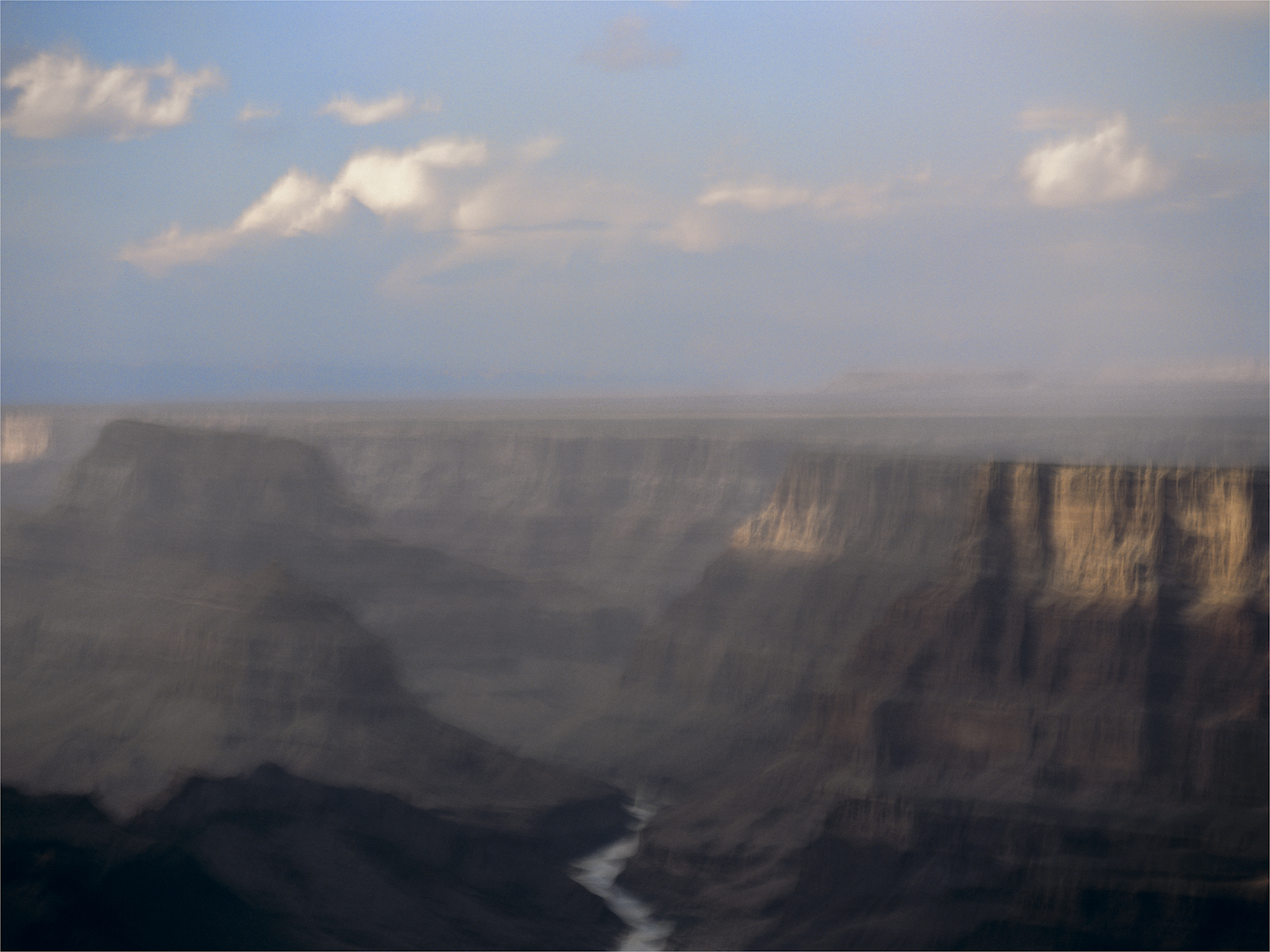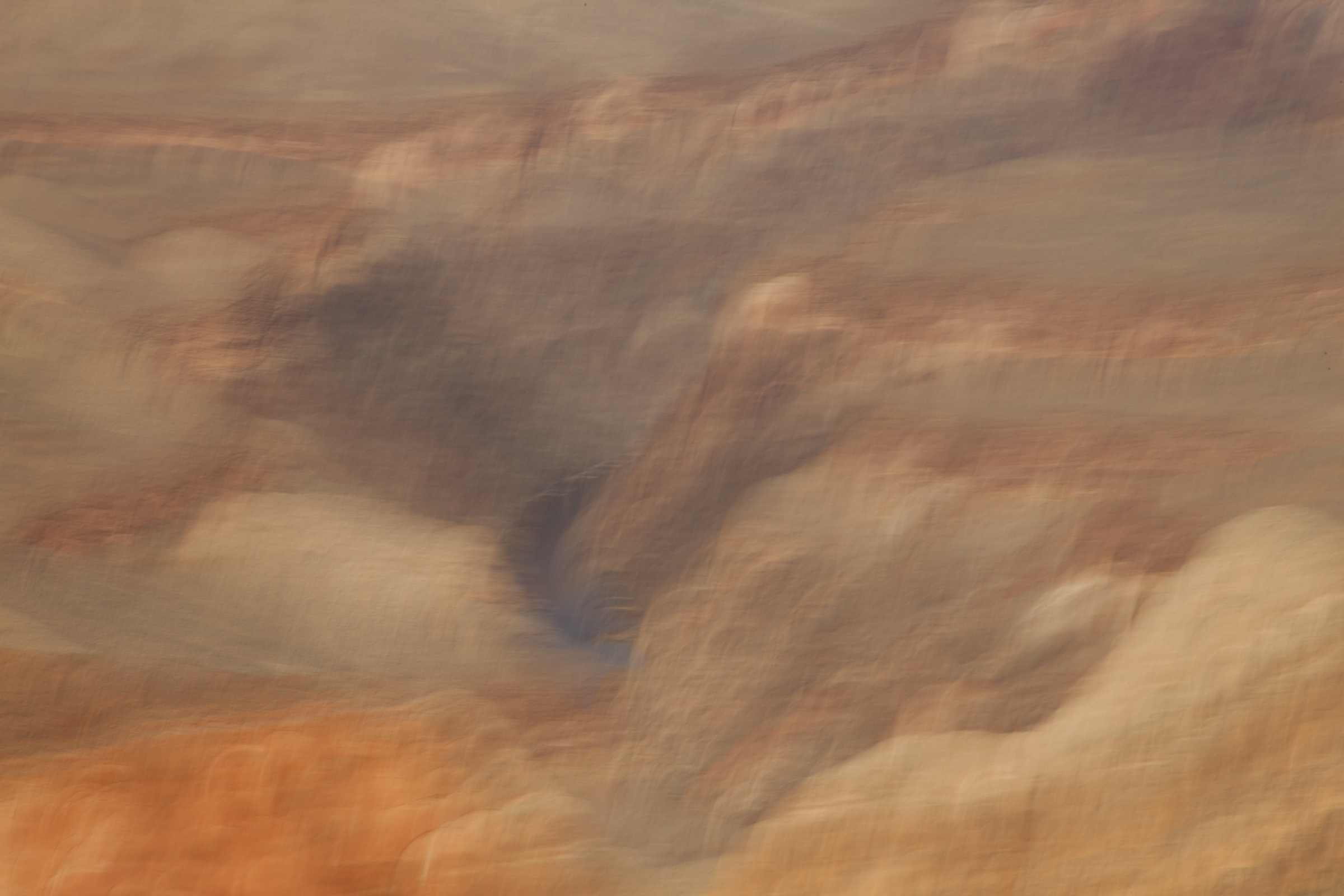
For me, landscape reflects the ultimate passage of time. Although Earth is thought to be 4.5 billion years old, almost no portion of it is visible in the landscape today.
 The oldest visible landscape I have seen is at the bottom of the Grand Canyon. The base rock on which the Colorado River flows today is estimated to be 1.7 billion years old, or slightly more than ⅓ of the Earth’s age, upon which subsequent layers of sedimentary deposits were laid down over the ensuing 1.5 billion years. But only during approximately the last 6 million years did the Colorado River cut through these relatively soft sedimentary layers down to the underlying metamorphic rock from the Earth’s mantle.
The oldest visible landscape I have seen is at the bottom of the Grand Canyon. The base rock on which the Colorado River flows today is estimated to be 1.7 billion years old, or slightly more than ⅓ of the Earth’s age, upon which subsequent layers of sedimentary deposits were laid down over the ensuing 1.5 billion years. But only during approximately the last 6 million years did the Colorado River cut through these relatively soft sedimentary layers down to the underlying metamorphic rock from the Earth’s mantle.
 Even if most of the landscape we see today represents just 1% of the Earth’s age, it still amounts to the last 4.5 million years of the Earth’s total history – a passage of time which I can’t even get my brain around.
Even if most of the landscape we see today represents just 1% of the Earth’s age, it still amounts to the last 4.5 million years of the Earth’s total history – a passage of time which I can’t even get my brain around.
But I can see it! We can all see it – the incredible shapes created by geology’s lifespan are all around us, except in the midst of the biggest, densest, urban centers. In each and every tableaux, the colors, texture, patterns and shapes, water, or lack thereof, and orientation to the sun, uniquely reflect it’s own history.
The flow of the Colorado River is what makes glimpses of the underlying 1.7 billion year old bedrock possible to us today; presented within an amazing technicolor history of the subsequent build-up of the sedimentary layering before us, all contained within the mammoth vessel we know as the Grand Canyon.
 Thinking in these terms reduces me and my sense of time down to a more humble perspective. And maybe that’s good for all of us. I know it is for me given my own hyperactive nature. Being in natural landscape offers me solace among the Earth’s countless creases and folds… Perhaps overlaying the landscape with a sense of the passage of time will provide you with a similar peace.
Thinking in these terms reduces me and my sense of time down to a more humble perspective. And maybe that’s good for all of us. I know it is for me given my own hyperactive nature. Being in natural landscape offers me solace among the Earth’s countless creases and folds… Perhaps overlaying the landscape with a sense of the passage of time will provide you with a similar peace.